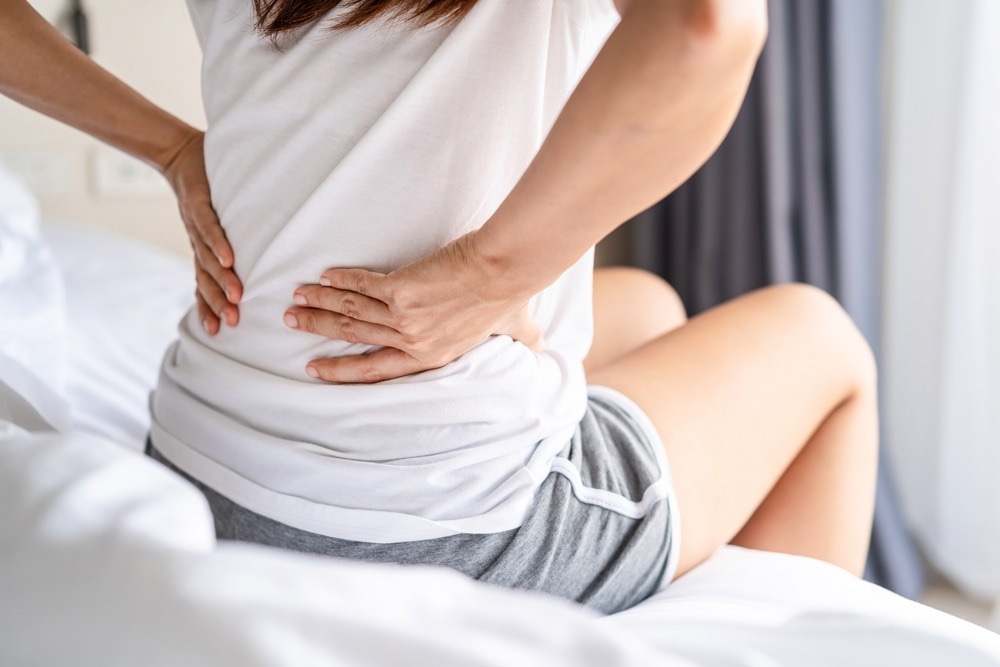In a recent study published in the Canadian Medical Association Journal, researchers performed a meta-analysis on the clinical course of acute, subacute, and persistent lower back pain.
 Study: The clinical course of acute, subacute and persistent low back pain: a systematic review and meta-analysis. Image Credit: kitzcorner/Shutterstock.com
Study: The clinical course of acute, subacute and persistent low back pain: a systematic review and meta-analysis. Image Credit: kitzcorner/Shutterstock.com
Background
Lower back pain is a significant global disability cause and a costly issue, with healthcare spending increasing annually. Management includes lowering pain through education, reassurance, non-pharmacological treatments, analgesic medicines, and timely reviews. Although the clinical trajectory is generally favorable, recurrence is common, and pain persists for many patients.
In their 2012 meta-analysis, the authors of the present study found significant improvement in pain and disability in the initial six weeks for individuals with acute or persistent low back pain. Understanding clinical trajectories of pain is crucial for early detection of slow recovery and the escalation of care to lower disease burden.
About the study
In the present study, researchers updated their previous meta-analysis by assessing the clinical trajectories of lower back pain of acute-intensity, subacute-intensity, and persistent nature.
The team searched the CINAHL, MEDLINE, and Embase databases between 2011 and January 2023 without any language restrictions. They also searched the references to the included studies to identify additional records. The research analyzed prospective cohort studies published in peer-reviewed journals reporting on individuals with acute (less than six weeks), subacute (six weeks to <12 weeks), and persistent (12 weeks to <52 weeks) non-specific pain in the lower back region.
The studies reported outcomes for pain intensity (such as visual analog scales), disability (self-evaluation of physical functioning, like the Roland Morris Disability Questionnaire), or global recovery measures. The researchers excluded studies including individuals with low back pain for ≥12.0 months. They also excluded retrospective cohort studies, interventional or experimental studies, studies including pregnant women, mixed populations (including individuals with neck pain), individuals with comorbidities such as osteoarthritis, and studies without longitudinal follow-ups.
The team described low back pain as pain or discomfort experienced below the costal margins and above the inferior gluteal folds, with or without neuropathic spine-related leg pain. They performed mixed modeling to determine pooled estimates at baseline, week 6, week 12, week 26, and week 52. Six researchers screened titles and abstracts, and after the full-text screening, two extracted data and evaluated bias risks, resolving disagreements by consensus or consulting a third reviewer.
The team used the Grading of Recommendations, Assessment, Development, and Evaluation (GRADE) approach to assess the certainty of the evidence. They pooled studies satisfying the eligibility criteria with those included in their 2012 research. Bias risk domains included sampling, completeness of follow-up, outcome reporting, and study attrition. They performed random-effects regression modeling for the analysis. They performed sensitivity analyses by limiting the analysis to studies with high follow-up rates (above 80% of participants) and individuals aged between 18 and 60 years, excluding those with radiculopathy or radicular pain.
Results
The team analyzed 28,641 records, removing 4,891 duplicates and screening 23,695 abstracts and 377 full texts. After assessing eligibility, they selected 95 records for qualitative (60 cohorts, n=17,974) review and quantitative (47 cohorts, n=9,224) research. The pooled data included 9,224 individuals with pain assessments, 8,957 with disability assessments, and 13,145 with global recovery outcomes. However, the researchers found variable bias risks, poor follow-up rates, and attrition in the studies, and most records did not include successive cases.
Among individuals with acute back pain, the mean values for pain scores with corrected inception time were 56, 26, 22, and 21 at week 0, week 6, week 26, and week 52, respectively (moderate-level certainty of the evidence). Among individuals with subacute pain, the mean values for pain scores in the corresponding weeks were 63, 29, 29, and 31 (moderate-level certainty of the evidence).
Among those with persistent lower back pain, the mean scores for pain were 56, 48, 43, and 40, respectively (very low-level certainty of the evidence). For disability, the clinical trajectory was marginally better than that of pain. Recovery outcomes revealed significant heterogeneity in recovery definition and follow-up times but aligned with meta-analyses on disability and pain outcomes.
Acute pain patients experienced a significant initial reduction in disability, followed by a persistent decrease over time. Subacute patients showed a similar trend but with smaller reductions in disability scores. Individuals with sustained pain showed higher variability in trajectory and persistent moderate disability over time. Participants with acute lower backache had a more favorable disability course than individuals with subacute pain, and those having subacute pain had a more favorable disability course for uncorrected time only. Sensitivity analyses yielded similar results.
Conclusion
Overall, the study findings showed that most individuals with acute and subacute-intensity lower back pain improve within six weeks but may continue to experience ongoing disability and pain. The clinical course in the chronic pain group was much less favorable than in the other groups, with very low-level certainty of evidence for small reductions in pain and disability over time. Further studies could include individuals aged below 18 years or above 60 years to improve the generalizability of the study findings.